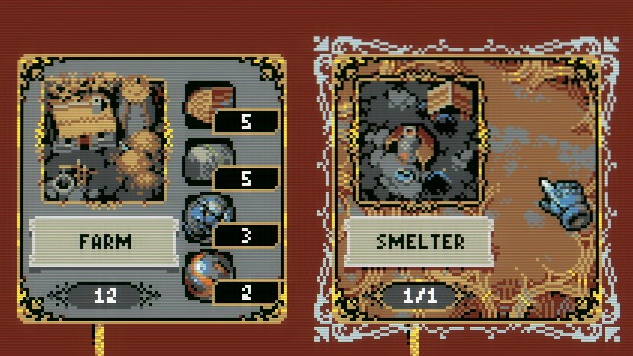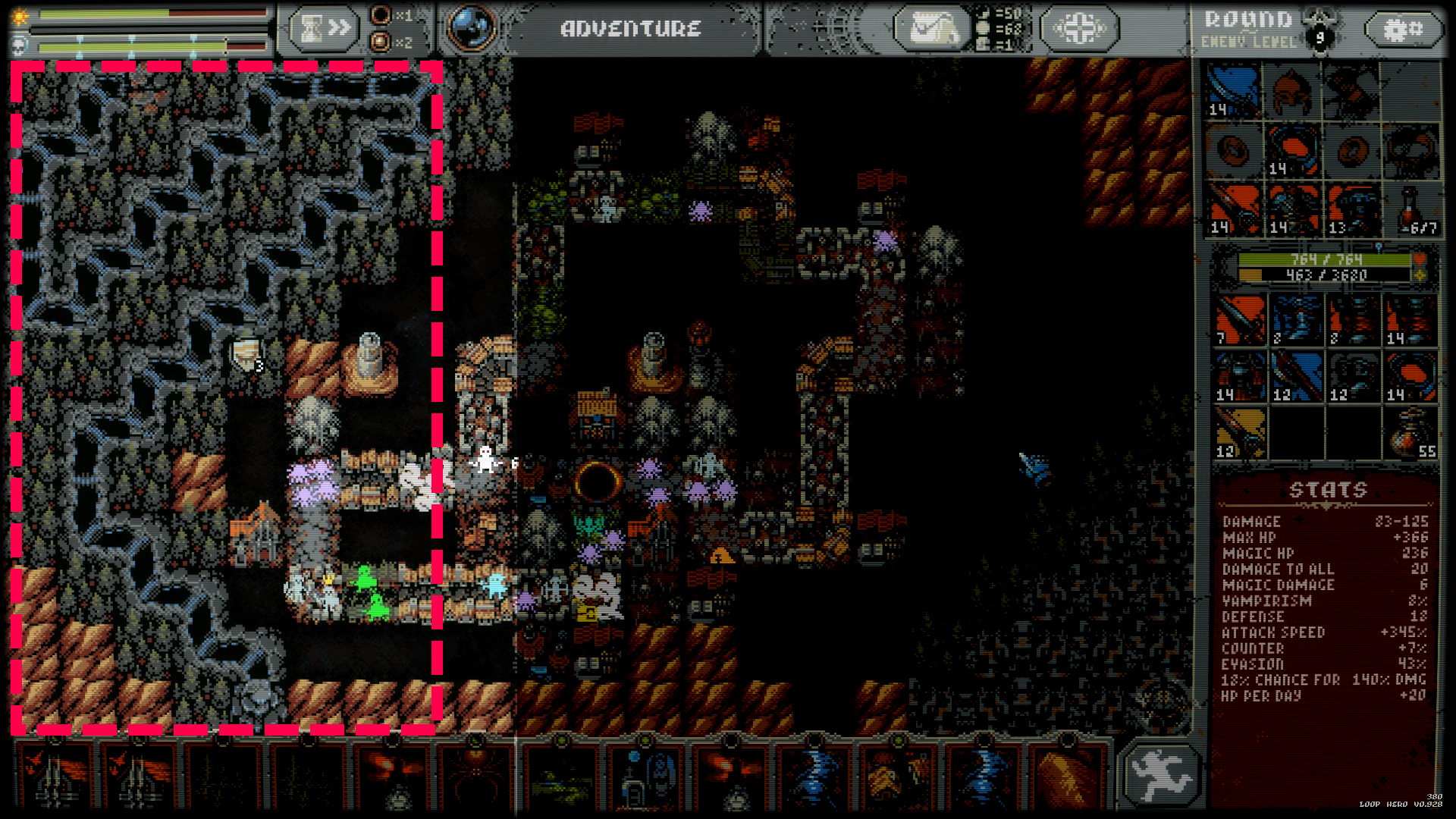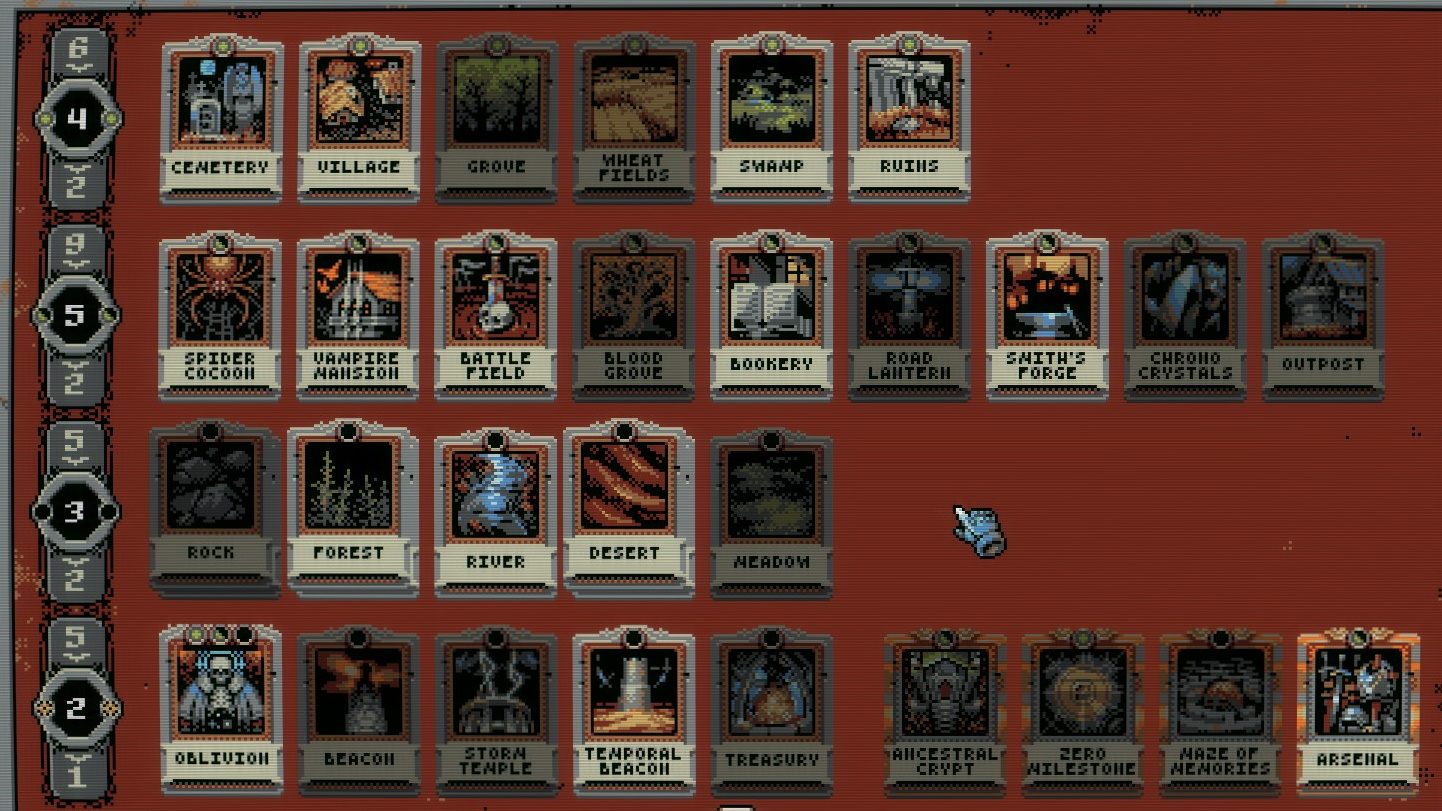Loop Hero tips: 11 tricks for kicking ass in the grim 'n grindy RPG
Tile building strategies, best builds, and other Loop Hero secrets.
Two important Loop Hero tips: 1) four goblins will kick your teeth in, and 2) know when to GTFO.
In a quiet-so-far March 2021, Loop Hero has made a nice splash as a simple-but-deep game loaded with secrets. I love this the way that Loop Hero doesn't explain itself, like a pre-internet RPG that you had to ask your friends at school about in order to beat. In that spirit, here's some Loop Hero guidance if you're struggling to figure out how to use certain cards or just want to know how to build an unstoppable Rogue with their own personal forcefield.
Loop Hero guide: beginning-of-game
Focus on these stats
There isn't a single path to victory in Loop Hero, but I had the most success with each class by building up these stats through cards and gear:
- Warrior: Max HP paired with some kind of HP restoration (regen/sec or per day)
- Rogue: Attack Speed, Evasion, Crit Chance
- Necromancer: Magic HP (the protective layer of HP provided by amulets), Max Skeletons, Attack Speed (this is how quickly you'll summon skeletons)
Later in the game you'll want to use camp items ("Supply") to accentuate these stats even further.
Higher-leveled gear isn't always better
It's tempting to immediately swap in brighter-colored, higher leveled gear, but you should know that rarer, shinier stuff isn't universally better.
Although higher-leveled gear should equate to bigger numbers, those numbers might not be the ones you care about most. Why focus on HP regen if you're usually at max HP? If your attack speed is super high, do you really need +10% counter? I'll often stick with a lower-leveled or lower-rarity item if it provides something I absolutely need, like Crit Chance for the Rogue.

For reference, here's the rarity of Loop Hero items:
Keep up to date with the most important stories and the best deals, as picked by the PC Gamer team.
- Grey background (provides one stat boost)
- Blue (two stats)
- Yellow (three stats)
- Orange (four stats)
Also keep in mind that integer-based stats don't scale with you, as enemies level up with each loop. Focusing on building a bunch of Magic Damage (which surpasses defense) might help in the early game, but as you encounter higher-level enemies a handful of free damage will feel like a bad investment of your cards. Meanwhile, 33% evasion stays pretty useful loop after loop. The Necromancer is a particularly good example of why you should scrutinize gear before swapping it in. Some lower-level rings will grant "+1 Skeleton," which can be a massive difference-maker in extended fights, and be preferable over many items three or four levels higher.
Likewise, some gear art in particular will correspond with useful effects. The Rogue's winged boots have ludicrously high evasion that I almost always reach for.
Swapping items too freely also has a minor disadvantage: when you hit max item capacity in your inventory and earn a new item, the oldest item becomes a piece of scrap metal, one of the more valuable basic resources for building camp structures.

Delay the boss!
Don't play every card that enters your hand.
The boss spawns on your campfire tile once you've placed a certain number of cards. The green map completion bar in the upper left corner corresponds with how many tiles populate the board: watch this closely to make sure you spawn the boss when you're confident in your gear, HP, and level. If you play every card that comes into your hand all willy-nilly, you'll end up fighting the boss much sooner than you'd like.
Inevitably, this means you'll churn through cards. That's OK: once your hand fills the bottom row of the screen, discarded cards actually become a useful resource you can use at camp. I actually avoid playing lower-tier cards like Rocks and Forest unless I'm forced to. It's OK to let your hero make a few loops without playing any cards. If you want to take this a step further, use Oblivion cards to undo less-effective card placements, which will dial the boss progress bar back a little.
Synergies are everywhere
There are lots of secret tile effects waiting to be discovered. At the outset of the game, you're going to get plenty of Meadow cards. Don't throw these and other basic tiles down wherever there's open space. Instead, place them next to a Mountain, a building, or almost anything, and watch them transform into a Blooming Meadow, an enhanced version that provides even more daily HP.
Most tiles have some kind of unique interaction, positive or negative, that adds to or changes their basic effect. See what happens when you play a bunch of forest cards...

Prioritize the Smelter
The Smelter unlocks the Arsenal card, which grants an additional gear slot specific to each class. For me, The Arsenal was an invaluable card that allowed me to transition to Acts 3 and 4 and pave the way for late-game victory.
Don't be afraid to GTFO
Loop Hero can be a grindy game if you die often, which nixes 70 percent of your resources. When you're within one tile of your campfire you can tap out of a run and retreat to camp with all of your collected resources by hitting the highlighted button in the lower-right of the screen. It's a totally valid strategy to go on resource runs, cash out, and not focus as much on killing a boss. Just note that there's a maximum "carrying capacity" mid-expedition, though some abilities can expand this.
Loop Hero guide: late-game tips (Acts 3&4)
Abilities matter, a lot
Village cards unlock a new XP and level mechanic, and once you fill that XP bar, you're given a choice between three random abilities from a class-specific ability table. I try to grab abilities that will increase damage or mitigate incoming damage, rather than stuff that boosts resource gathering or metagame enhancers.
It's definitely possible to get unlucky with what you draw here. For the Rogue, I insta-grab the ability that grants a 75% to spawn a pet, which can tank a little damage and deal it back. And for the Necromancer, I always take the +1 Max Skeletons ability, which gives me a bit more freedom when selecting which rings and other gear are best. There's an achievement for spawning 10 skeletons, which remains my personal dream.
Ruins can mess you up
Ruins spawn up to four giant worms who are apparently so giant that they can attack from one tile away in either direction. Be careful about which tiles you place adjacent to a Ruin tile: any living worms will appear in the back row. Definitely avoid putting a Ruin tile behind your campfire, which is where bosses spawn, or you'll find yourself fighting three or four worms while you fight the boss. No thanks.
Load up on Watchtowers
Another base structure worth building as soon as possible are Watchtowers, which each contribute one archer on the tiles bordering your campfire. These guys are awesome back row damage dealers that sit in your back line and plug away at enemies. Upgrading the towers extends the distance that they'll participate in fights, which basically doubles their effectiveness.
...and then make your campfire area a death-filled nightmare
With three or four archers on your side, killing the toughest enemies in the game (even those dang worms) becomes surprisingly simple. I concentrate as many enemy-producing tiles as possible around my campfire so I can rack up a ton of resource and gear rewards. Layering Vampire Mansions, Battlefields, and Temporal Beacons in this area can add additional types of enemies aside from whatever you've placed on the path itself.

Build a river like this
I found Rivers to be a massively important card for amplifying other stat-boosting cards. They double the effectiveness of anything they're adjacent to, and that doubling stacks if two River tiles border one other tile. So if a Blooming Meadow is surrounded by two River tiles, that's +12 HP (4x3 HP) per Meadow per day. Hell yeah.
A zig-zagging path of L-shaped River tiles maximizes the efficiency of these bonuses.

The best build I've found
Rogue: Arsenal & Thickets & River & Sand Dunes
This is the build I ultimately beat Loop Hero with. Paired with an Arsenal card, the Rogue gains the amulet equipment slot, which provides a free, full layer of HP that you bring into each fight. Huge. With a good amulet and some evasion, I'll often go entire loops without losing any base HP.
Interestingly, Sand Dunes (which lower all creatures' HP) do not affect magic HP. So as I play more and more Sand Dunes, lowering enemies' HP and my base HP, my magic HP shield remains untouched and disproportionately useful. Thanks, amulet.
And because I'm not focused on max HP at all, I don't bring Meadows or Mountain cards to battle. Instead I focus almost exclusively on pairing River cards with Thickets to (eventually) get up to about +300% attack speed. At that point most battles are a blur.
- Loop Hero combos: All card combination effects
- Loop Hero classes: How to optimise your build

Evan's a hardcore FPS enthusiast who joined PC Gamer in 2008. After an era spent publishing reviews, news, and cover features, he now oversees editorial operations for PC Gamer worldwide, including setting policy, training, and editing stories written by the wider team. His most-played FPSes are CS:GO, Team Fortress 2, Team Fortress Classic, Rainbow Six Siege, and Arma 2. His first multiplayer FPS was Quake 2, played on serial LAN in his uncle's basement, the ideal conditions for instilling a lifelong fondness for fragging. Evan also leads production of the PC Gaming Show, the annual E3 showcase event dedicated to PC gaming.

